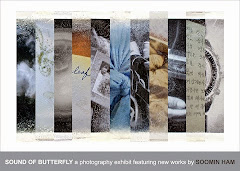 |
| (C) Alan Sislen |
Probably the most frequent question I’m asked about my photography,
is “What camera do you use?” For some people it may seem like a logical
question to ask, but once they know the answer, then what?! The
implication, is that somehow, the camera was responsible for making the
photograph, and that anyone else with the same camera could obviously
have taken the same photograph.
We’ve all heard the un-truism that, “Clothes make the man” (or woman, to
be PC) and it’s the same for photography, painting, cooking, or master
carpentry. While the camera may contribute to the quality of the
photograph, or the canvas, paints and brushes may contribute to the
painting, or the pots, pans and ingredients might contribute to the
taste of the meal, or the lathe might have helped produce the furniture,
we all know that much, much more is involved in the final piece of art,
meal or furniture. In fact, the artist or cook or carpenter merely
increased the probability of getting their desired outcome if they used
the most appropriate tools. But it is those tools PLUS their skills,
training, experience, and sometimes luck, that helped them accomplish
their ideal outcome.
To continue, click here...






